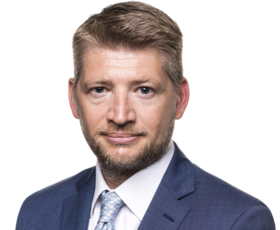One of the positive changes the shift in global supply chains away from China has provided is to add to the opportunity set for some of the more dynamic emerging markets to increase their share of US imports, benefiting from the trend of ‘nearshoring’ at the same time. While factors such as an inadequate domestic infrastructure, political instability and currency risk are often cited as inherent weaknesses, many emerging markets are starting to show greater resilience and adaptability than their more developed peers. In fact, many have more successfully managed their way through some of the recent macro headwinds and a positive growth outlook appears set to continue their good start to 2024.
In fact, Jorry Nøddekær, manager of the Polar Capital Emerging Markets Fund, believes there are five good reasons emerging markets are close to an inflection point.
| 1. | We are at the start of a big technology upcycle, clearly driven by artificial intelligence (AI) being expanded into data centres, new architectural design and so on. In emerging markets there are many companies that are key in that supply chain, whether we are talking about memory or other critical components such as the foundries manufacturing the chips. We think technology companies in emerging markets will drive a strong earnings cycle over the next 12-24 months. There will be much from South Korea and Taiwan but, given their size, significance and the cyclicality, when these earnings turn around we believe they will give an uplift to the whole earnings per share growth story growth for the asset class. Semiconductors were a strong growth area for us last year but we are only at the start of a new, strong long-lasting technology upcycle. We see a great deal of consolidation on the supply side, with companies in a strong position to monetise these opportunities even better than they did in the previous cycle. |
| 2. | The second driver is the overall growth and consumption in many of the core emerging economies – the likes of India, Vietnam, Indonesia and Brazil – where we are already seeing a good level of economic activity. There is pent-up demand, and monetary – and to a large degree fiscal – policy has been tight across emerging markets for a good period already. In fact, on 28 July last year, Chile was the first emerging market to begin what we believe could be a significant loosening cycle. Latin American economies had raised rates earlier and more aggressively than the rest of the world, in 2021-22, but now double-digit nominal rates are rendering real rates too high for the overall outlook. As inflation tumbles we are set to go into reverse. This may not lead to strong investment or credit growth immediately in 2024, but we are more positive about this moving into 2025 and 2026 as these things always work with a lag. Looking forward, we would expect the monetary easing cycle to act as an inflection point, with the market willing to believe an investment and consumption cycle is coming. The investment consumption and earnings cycle will start to evolve, the first signs of which we will likely see later this year. |
| 3. | The third factor also relates to the Federal Reserve (Fed) cutting interest rates, a positive for emerging markets. There is little question that the implied risk premium in emerging markets is high, much of it driven by the negative perception of China, tight monetary policy and inflation nervousness. With the Fed cutting rates, we will likely see more of an easing cycle and believe a secondary effect from that will be better liquidity in the local market alongside a new investment and consumption cycle. This will lead to a reduced risk premium across emerging markets, allowing them to hopefully run on a higher multiple and help lift valuations. When the Fed starts to cut interest rates, there will be an inflection point for many of these economies to start their own aggressive rate-cutting cycle which will likely have a multiplier effect on each economy. The specific timing is difficult to predict but our best forecast is around December (i.e. after the US election). We see key emerging markets starting to cut rates before the Fed, which is not normal practice but we have already seen a few start to do so. We are clearly seeing a difference in underlying inflation trends that can fundamentally justify such a move and believe we are increasingly getting to a stage where the market will like these moves. |
| 4. | The downside risk to China's weak GDP is that some of the GDP growth forecasts look overly optimistic. However, we still think that from an equity market and earnings perspective, we are getting close to the bottom. China is no longer deteriorating – given its size it has been underperforming for the past three years – and we believe that will be enough to help lift the overall earnings growth forecast. We are not China bulls from a growth or politics perspective but, focusing purely on earnings, we think we are close to the bottom. China will still play a significant role as the exporter of consumer and capital goods into the new emerging market growth areas. BYD, for example, is a Chinese electric vehicle manufacturer setting up shop – and selling well – in Indonesia. The Middle East is heavily investing in renewable energy, particularly solar, and their solar panel inverters are largely sourced from China where the country dominates that part of the supply chain. |
| 5. | The final driver is South Korea’s ‘Corporate Value up’ program, akin to its government trying to copy and paste what has been going on in Japan, though there are clear variations and differences. South Korea is trading at a huge discount, with many issues related to what we see as poor public governance structures, weak capital allocation and capital market structures. The government has outlined policies that would make the capital market work much better, which should help lift the discount. Given the size of the South Korean market and the extremely low valuations, it has the potential to lift quite a lot. Japan is showing early indications of being successful with its corporate governance reform and we could see South Korea do the same. Our best estimate is this could go on for the next 3-4 years. It is not something that happens overnight though it is a positive helping to drive things in the right direction that, in turn, could help lift valuations for the asset class. |
While there are risks in emerging – as well as, for balance, developed – markets, these are five key drivers we see that could change the narrative around emerging markets for the rest of this year and, hopefully, lead to more positive absolute returns. It could also set the asset class up very well for 2025 when some of the real effects of monetary easing will, all things being equal, start to come through in the real economy.
















